We’ve all been there – you head to the shops to buy some new shoes and set your heart on the perfect pair, only to find they’re sold out in your size. The heartbreak is real!
👞 Jump to a Section:
- 1. Average Men’s Shoe Size in the US (and Globally)
- 2. How to Measure Your Shoe Size Accurately
- 3. Does Height Affect Shoe Size?
- 4. Shoe Size and Health: Myths vs. Reality
- 5. When Do Feet Stop Growing?
- 6. Celebrity Shoe Sizes: From Tiny Feet to Record-Breakers
- 7. Tips for Shopping If Your Shoe Size Isn’t Average
- 8. Record-Holding Feet: The Largest Shoe Sizes in History
- 9. Where to Buy Shoes in Larger or Uncommon Sizes
You’ve probably wondered whether it’s because your size is so popular that it’s always sold out or so rare that shops don’t keep many of your sizes in stock. It’s hard to know where you sit on the foot scale. So, what’s the average shoe size for men?
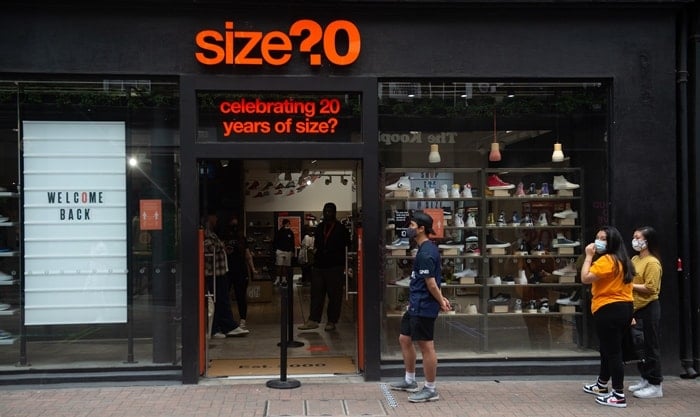 Shoppers line up outside the Size? sneaker store on Carnaby Street in London during its 20th anniversary celebration on June 15, 2020 (Credit: WENN)
Shoppers line up outside the Size? sneaker store on Carnaby Street in London during its 20th anniversary celebration on June 15, 2020 (Credit: WENN)
When it comes to feet, everyone’s different. They come in a variety of sizes, shapes, and appearances. You might be flat-footed, while your identical twin could have a high arch. Even if a shop stocks your size, it can still be tricky to find a good fit if you have a particularly wide or narrow foot.
Interestingly, the average shoe size varies a lot between different countries. If you’ve ever wondered whether you have small, medium, or big feet, keep reading!
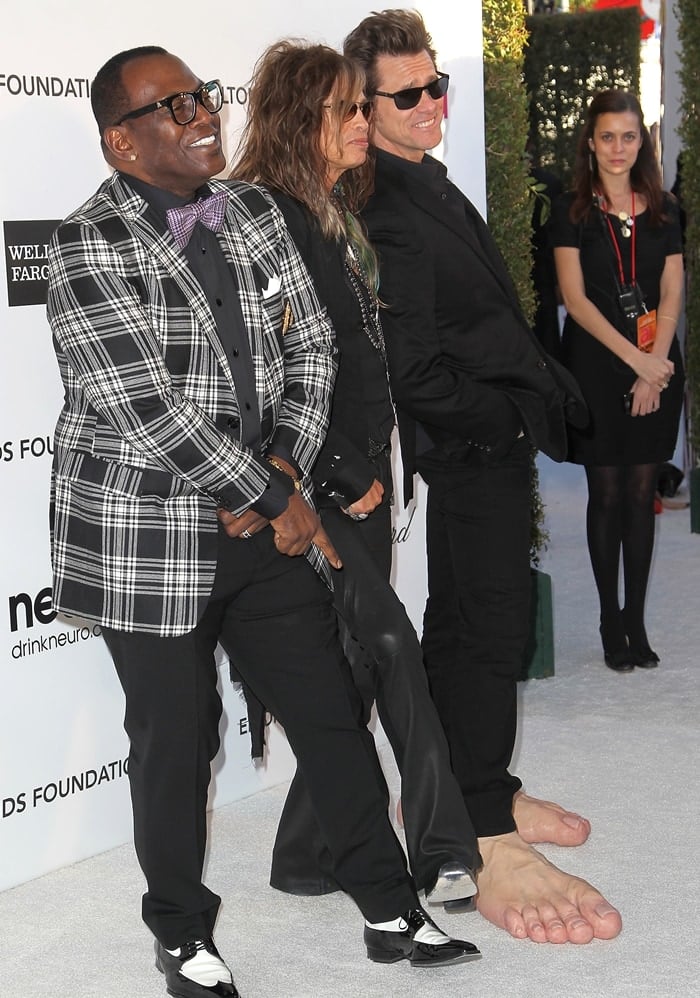 Jim Carrey playfully shows off oversized prosthetic feet next to Randy Jackson and Steven Tyler at Elton John’s AIDS Foundation Academy Awards Viewing Party, drawing attention to the dramatic contrast in shoe sizes (Credit: WENN)
Jim Carrey playfully shows off oversized prosthetic feet next to Randy Jackson and Steven Tyler at Elton John’s AIDS Foundation Academy Awards Viewing Party, drawing attention to the dramatic contrast in shoe sizes (Credit: WENN)
Don’t worry, we’ve got your back. Read on to find out the average male foot size, how to measure your feet, how to maintain healthy feet, where to find shoes in less-common sizes, and which celebrities have the same size feet as you.
Average Men’s Shoe Size in the United States (and How It Compares Globally)
According to a 2014 report from the American Academy of Orthopaedic Surgeons, the average foot size for men in the US is 10.5. This falls right in the middle of the international average, which ranges from 9 to 12 (when converted to US shoe sizing).
How to Measure Your Shoe Size Accurately at Home or in Stores
An estimated one in five people currently wears the wrong shoe size. Not only is this uncomfortable, but it can also lead to poor posture, blisters, and cramps.
The best way to ensure you’re wearing the right size shoes is to measure your feet properly.
An interesting fact you may not realize is that your feet tend to be larger at night. This is caused by swelling from daily activities such as standing, walking, and running errands. Therefore, it’s best to measure your feet at night to allow for a little extra room for a comfortable fit throughout the day.
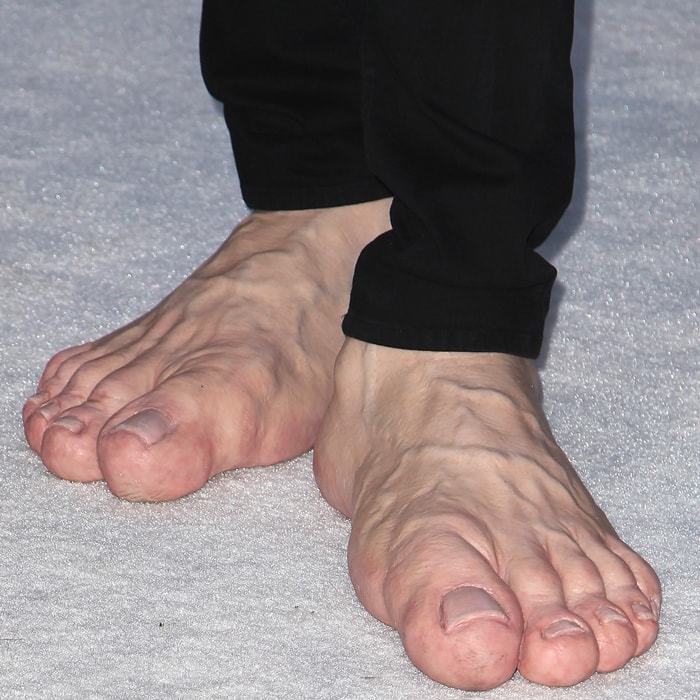
The most accurate way to measure your shoe size is to use a Brannock Device. This is a special device used to measure the length, width, and arch length of the foot. If you’ve ever been to a specialist shoe shop, you’ll probably recognize one.
You can purchase a Brannock Device on Amazon or visit any reputable shoe store to have your feet measured.
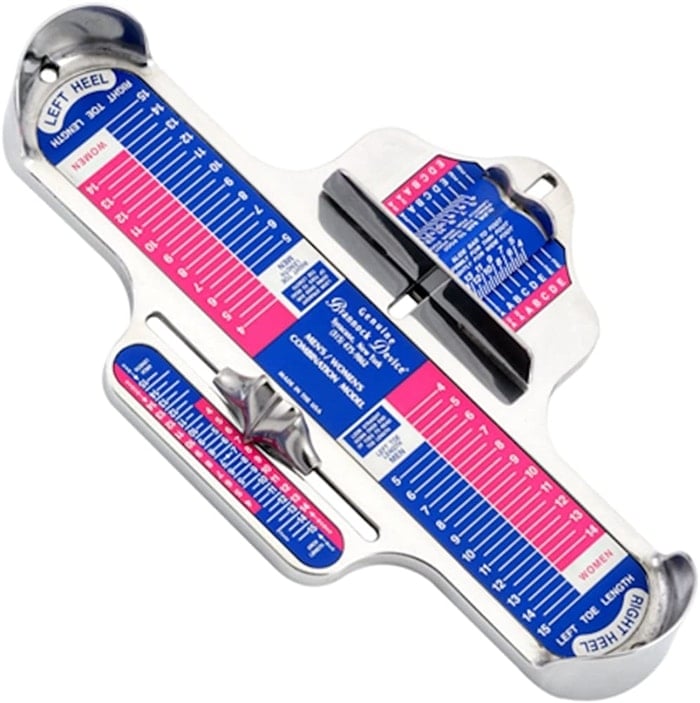
Alternatively, you can measure your foot with a ruler. Place a ruler on the floor and step on it with your heel at the zero mark. Step flat and measure where your toe ends. When discussing shoe size, we often refer to the length, but the width is also crucial for achieving a perfect fit.
Most shops only stock one standard width, but some specialist shops sell narrow and wider fits.
Does Height Affect Shoe Size? What Science and Stats Say
There is a correlation between height and shoe size. Our feet need to support us and hold us up, allowing us to maintain our height and weight. Taller individuals typically have larger feet than shorter individuals, although this isn’t always the case.
Throughout history, the average height has steadily increased as humans have evolved and the quality of life has improved. People are getting taller, and as a result, the average foot size is increasing.
According to the Centers for Disease Control and Prevention (CDC), the average height for an American man over the age of 20 is currently 5 feet 9 inches. The average woman is 5 feet 4 inches tall.

Generally speaking, the taller a man is, the larger his foot size tends to be. However, age and genetics will also influence your shoe size.
The average shoe size for men between 5’6″ and 5’9″ is a size 10. The average shoe size for individuals between 5’10” and 6’2″ is 11.5.
Shoe Size and Health: Myths vs. Reality
A common misconception is that shoe size is a reliable indicator of health. But is it true that the bigger your shoe size, the healthier you are?
Although this can be the case, it’s certainly not a definitive indicator. Research has shown that prolonged malnutrition during the developmental years can have an impact on height and shoe size. Yet, ill health isn’t the only reason a person may be shorter with smaller feet, and someone taller with larger feet isn’t necessarily healthier than the average person.
When Do Men’s Feet Stop Growing?
Our feet typically stop growing after puberty, around the age of 16. However, you may find that your shoe size increases slightly as you age. Those with huge feet have reported continuous, steady growth. These cases are often a result of genetic factors.
Some people find that their shoe size increases slightly with age. This is usually due to weight gain and loss of ligament mobility, which essentially flattens the arches of your feet.
Celebrity Shoe Sizes: From Tiny Feet to Record-Breaking Sizes
As you can imagine, many taller celebrities have larger shoe sizes. Shaquille O’Neal, the legendary basketball player, stands at 7’1″ inches tall, and his basketball shoes are a whopping size 22!
Pro-wrestler turned actor/producer Dwayne “The Rock” Johnson, who is 6’2½” (189.2 cm), wears a size 14. Tom Welling, from the show Smallville, is 6’3″ and also wears a size 14 shoe.
Zac Efron is 5’8″ and wears a 9.5, whereas actor Tom Cruise is 5’7 ¾ “(172.1 cm) and wears a 9. Despite Matilda actor Danny DeVito’s small stature at 4’10”, he also wears a size 9.
Famous Aussie actor Liam Hemsworth wears a size 13, but his brother, Chris Hemsworth, is a size 11. On the other end of the spectrum, there are male celebrities with shoe sizes smaller than average. They often wear height-increasing elevator shoes – the push-up bras of menswear!

Tips for Shopping If Your Shoe Size Isn’t Average
The struggle is real for those who have significantly bigger feet than average. For those with feet as big as Shaquille O’Neal’s, it’s almost impossible to find suitable shoes in regular stores.
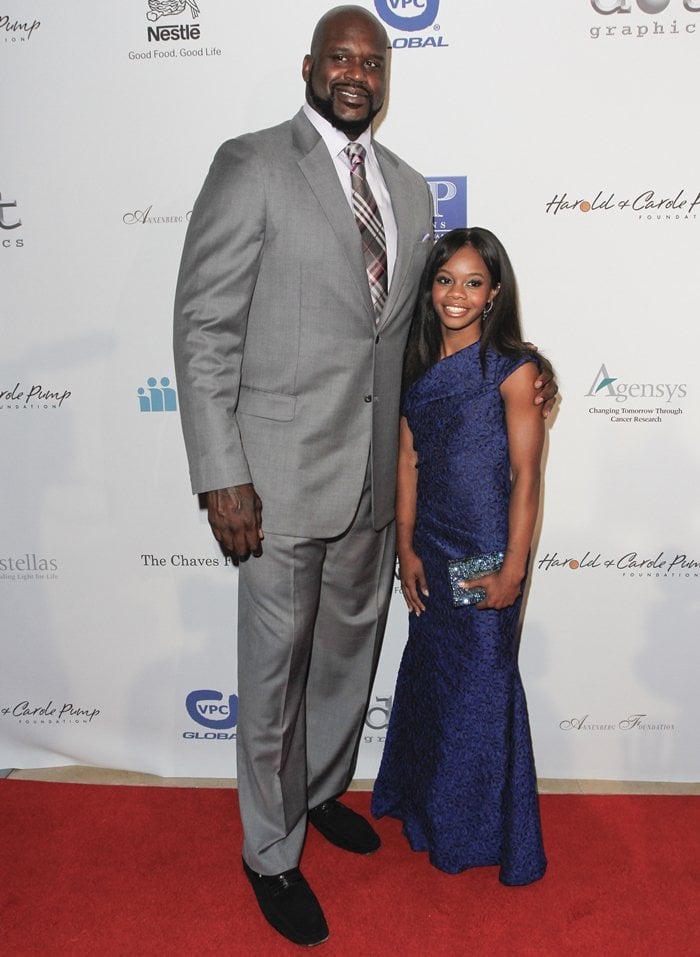
Record-Holding Feet: The Largest Shoe Sizes in History
According to the Guinness Book of Records, the world’s largest living feet belong to Jeison Orlando Rodríguez Hernández, measuring 1.31 feet long.
The biggest feet ever recorded belonged to Robert Wadlow, who wore a size 37 in US sizing. This is over three times bigger than the average man’s shoe size in the US, so you can imagine just how big they were!
Both Robert and Jeison had to have their shoes custom-made – I bet you’ve never come across a size 37 in Foot Locker!
Where to Buy Shoes in Larger or Uncommon Sizes
If you’re looking for larger shoe sizes, sports brands are a safer bet than regular fashion stores. Athletes, such as basketball players, are typically taller than average and have larger feet. According to the National Basketball Association (NBA), the average shoe size for a professional basketball player is 14.
Nike offers the largest size, up to a men’s size 22. Adidas has shoe sizes up to size 21.

For those blessed with sizable soles, finding a fashion-forward fit is often a frustrating quest. Unless, of course, you’re Shaq, landing custom-gifted giants, or The Rock, who launches his own footwear empire.
Bigger sizes are not commonly found in stores and must be ordered online. As there’s less demand, you won’t see every style in the shops available in your size. As annoying as it may be, men with larger feet need to be more proactive and flexible when shopping for shoes.
Try shopping online or visiting specialty retailers that cater to the needs of taller men for shoes and clothing. Shopping with a retailer specializing in larger shoe sizes can be very helpful and save you from disappointment when your size is unavailable.
Sometimes, there is a limited number of pairs in these sizes, which means they sell out quickly.

Those with smaller-than-average feet have it easier. The smallest men’s size available is a US 6, but men with a smaller foot size can find shoes in the children’s section.
Many great designers make kids’ shoes in the same style as adults. A huge perk is that kids’ sizes are significantly cheaper, so you’ll save a substantial amount of money on your footwear wardrobe.
For those with special widths, there are also limited options. Some brands, like New Balance, specialize in shoes in a variety of widths.
If you find that your shoe size is frequently unavailable, there isn’t a straightforward explanation for why; it largely depends on the size of your foot. Your average shoe store will carry more standard sizes and fewer pairs of those less common sizes.
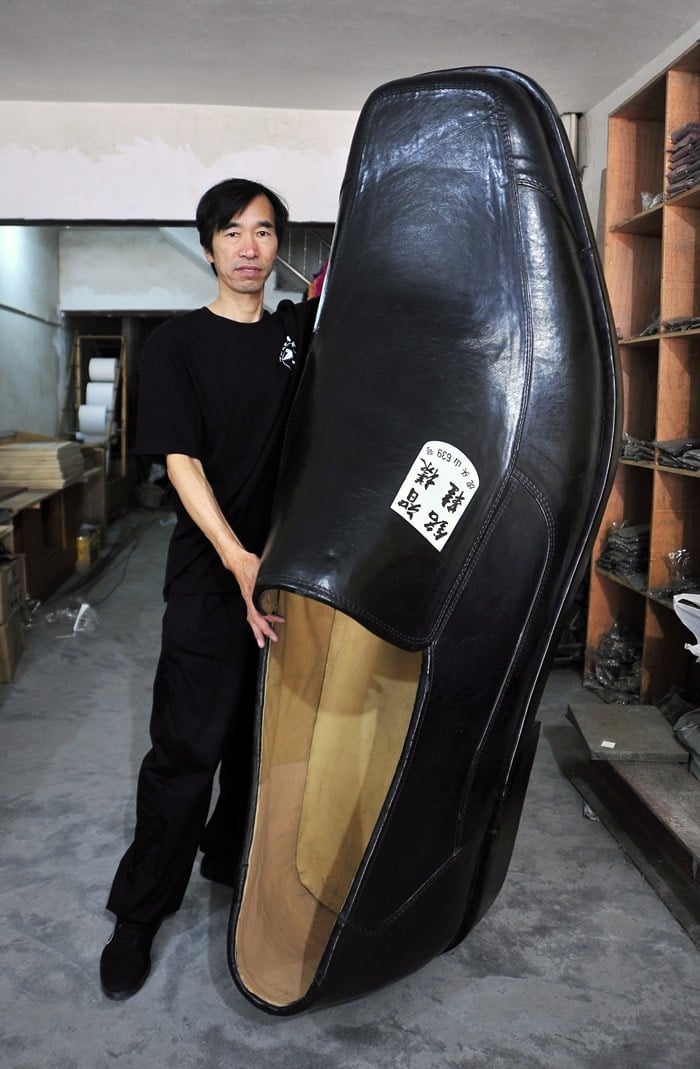
If you find a pair in your size online that you love but aren’t sure if they will fit, go to a store and ask if they have a similar style in your size. You can try it on for reference. You can then go online and order the shoes, feeling more confident.
Average or not, shoe shopping can be hit or miss. To boost your chances of finding a perfect fit, be sure to measure your foot accurately and avoid being part of the 20% who wear the wrong size.
More Shoe Size Guides You Might Find Helpful
Whether you’re shopping in the U.S., traveling abroad, or simply curious about how your shoe size stacks up, understanding sizing systems is key to finding the perfect fit. To help you further, we’ve curated a selection of our most popular guides below.
👟 Explore Shoe Size Guides & Fashion Insights:
- 📏 Average Shoe Size for Women: Why Men Prefer Petite Females — covers current US average women’s shoe sizes, how they’ve changed, with comparisons and cultural context.
- 🌍 Shoe Shopping Simplified: EU vs. US Size Differences — a guide to converting between size systems, which readers often need for online shopping.
- 👞 Average Shoe Size for Men: Most Common Male Foot Sizes — gives averages by height ranges, includes celebrity examples, with tips for men with uncommon shoe sizes.
- 🇲🇽 Mexico to US Shoe Size Conversion Guide — explains how Mexican shoe sizes (measured in centimeters) convert to US men’s, women’s, and children’s sizes with full charts.
